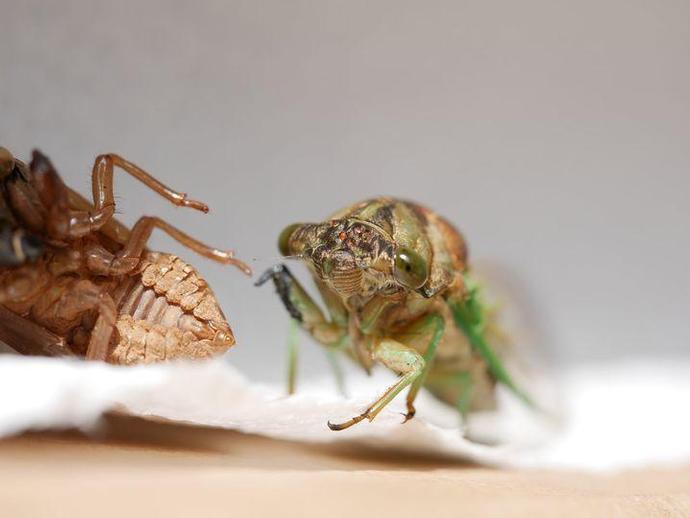November 28, 2021
We're reaching into the archives for today's #BenInNature update presented by our friends at Carter Bank & Trust! The following post was originally published on September 4, 2020.
While the periodical cicadas that emerged early in the summer are long gone, we still have a little bit longer to enjoy Virginia's annual cicadas! This one belongs to the genus "Neotibicen," and these cicadas are also colloquially known as harvestflies or jarflies. I found this particular one right after it had emerged on a rainy morning last weekend. It looked like it was having some trouble navigating the puddles, so I did what anyone would do: I brought it inside my house, pinned a paper towel to the inside of a cardboard box so it could have something to hold onto, and let it molt in a comfortable dry environment. Unfortunately, it still had a little trouble; as you can see, part of its right front leg got stuck inside the shell. I think it adds character.
Annual cicadas like this one can be found every single summer in the U.S., unlike the periodical cicadas we saw earlier this year, which only emerge every 13 to 17 years. Annual cicadas also spend multiple years underground like periodical cicadas, but their emergences are staggered so that some can be spotted annually!
If you look closely at the first picture, you'll notice three little orange spots right in the center of the cicada's forehead. Believe it or not, these are eyes! They are known as "ocelli," and many insects have them. Unlike the much more complex compound eyes that many insects have, ocelli are simple photo-receptors that consist of a lens and a few sensory cells. These eyes cannot form a complex image; instead, they're used for detecting light and movement.
ABOUT #BenInNature
Social distancing can be difficult, but it presents a great opportunity to become reacquainted with nature. In this series of posts, Administrator of Science Ben Williams ventures outdoors to record a snapshot of the unique sights that can be found in the natural world. New updates are posted Monday - Friday, with previous posts highlighted on the weekends. This series of posts is made possible thanks to the support of VMNH Corporate Partner Carter Bank & Trust (www.cbtcares.com).
NATURE PHOTO IDENTIFICATIONS
If you discover something in nature that you would like help identifying, be sure to message us right here on Facebook with a picture (please include location and date of picture) and we'll have our experts help you identify it!

 Hours & Admissions
Hours & Admissions Directions
Directions

